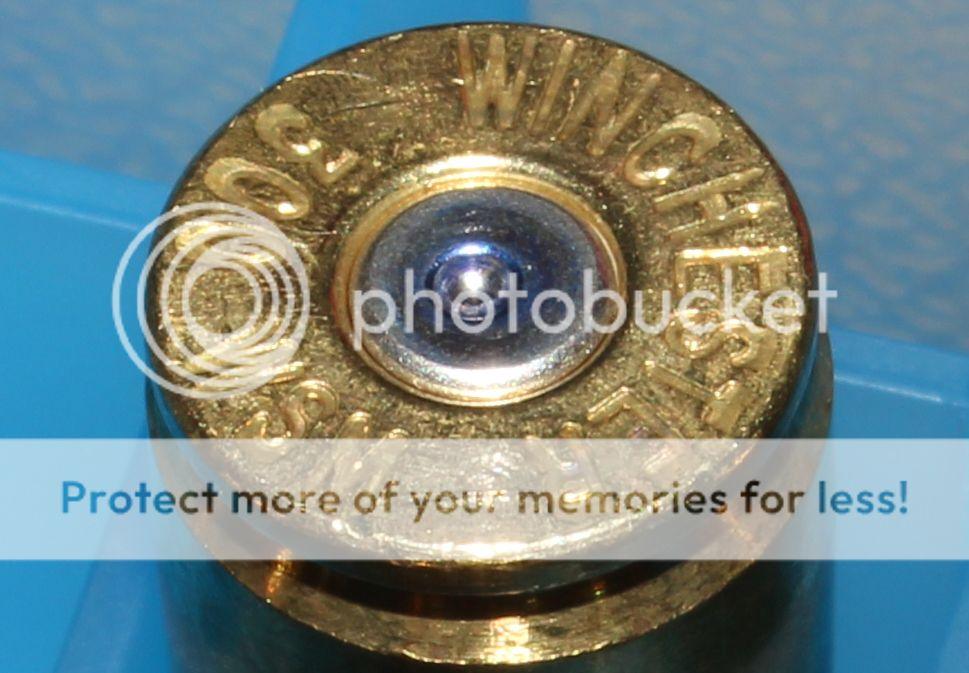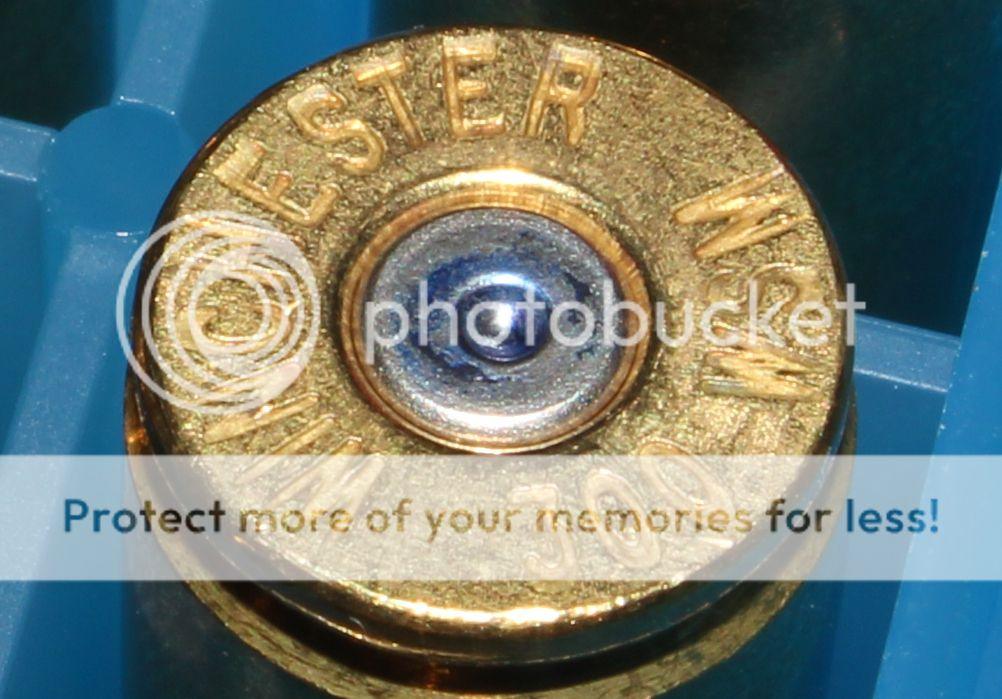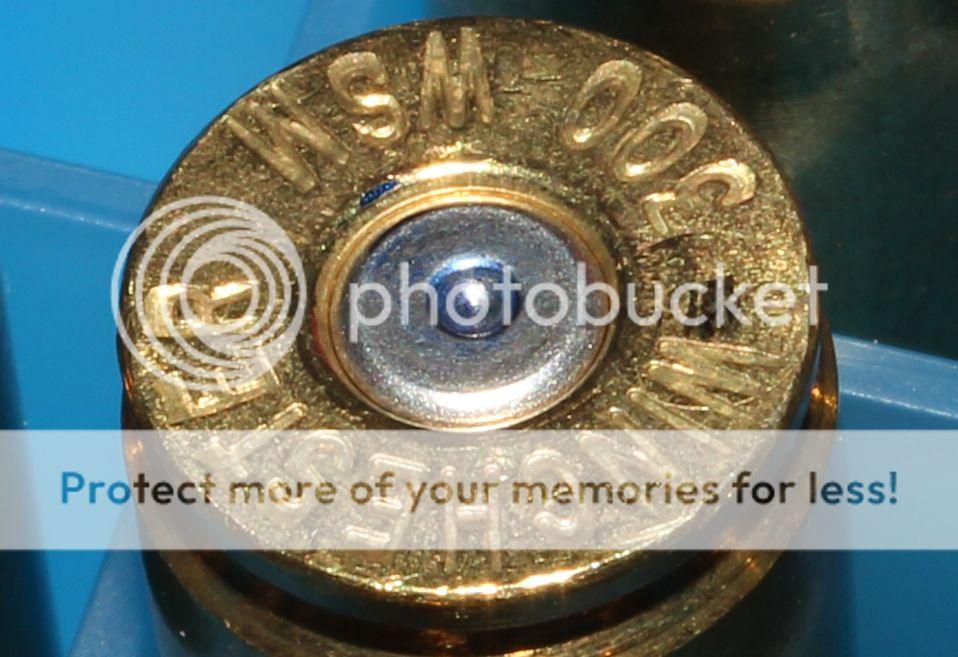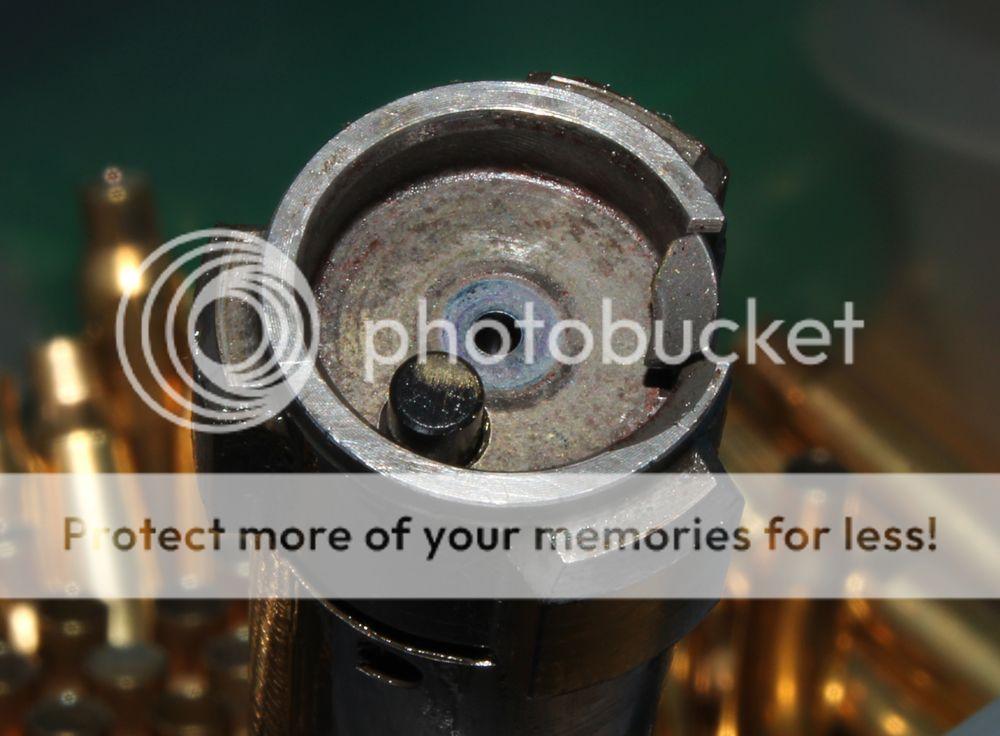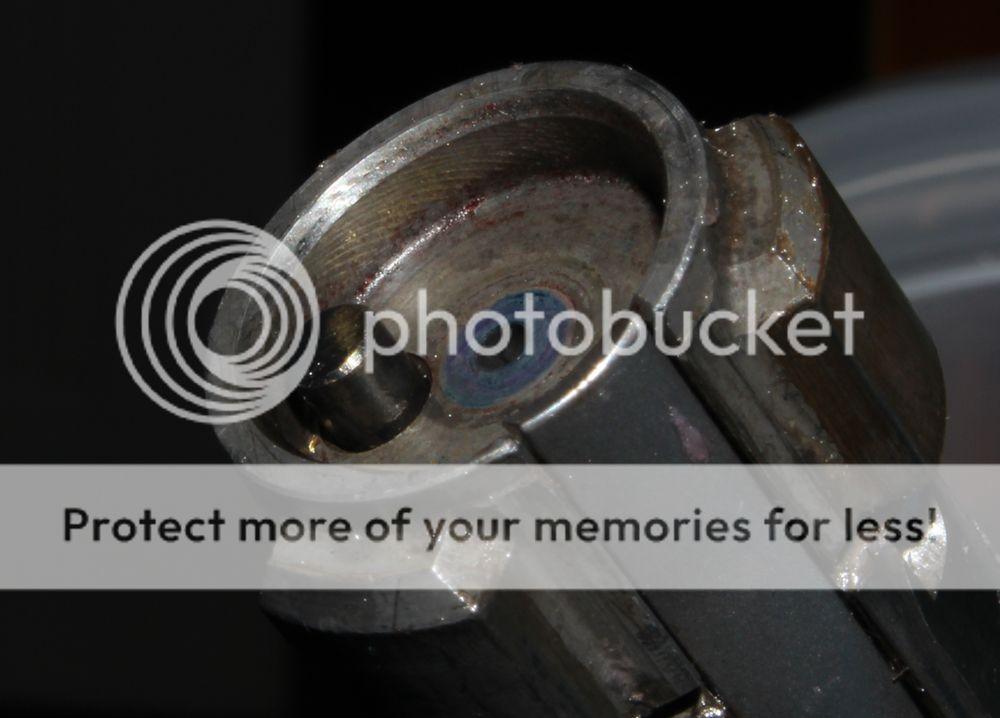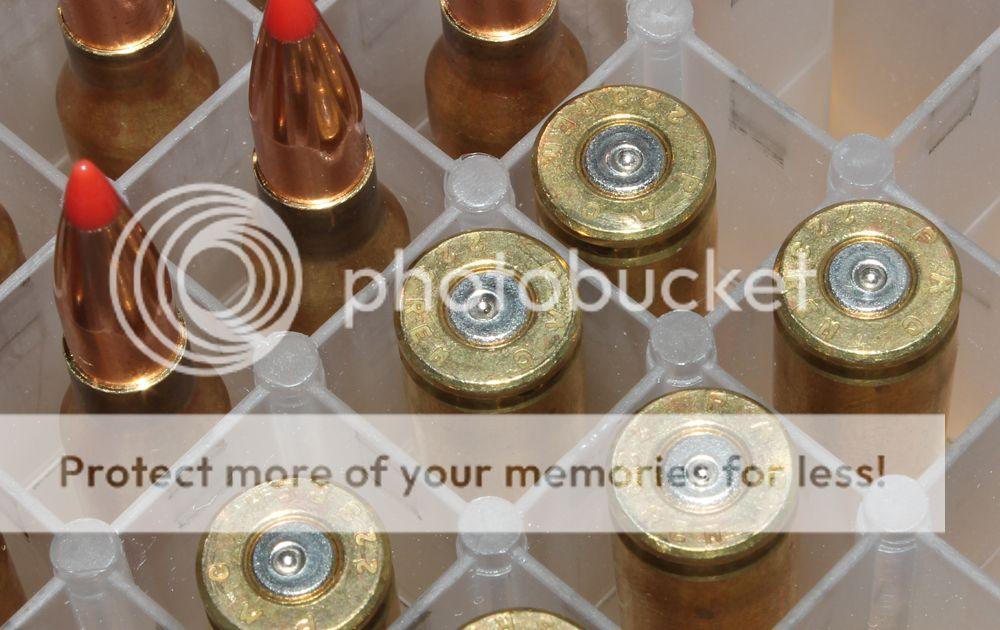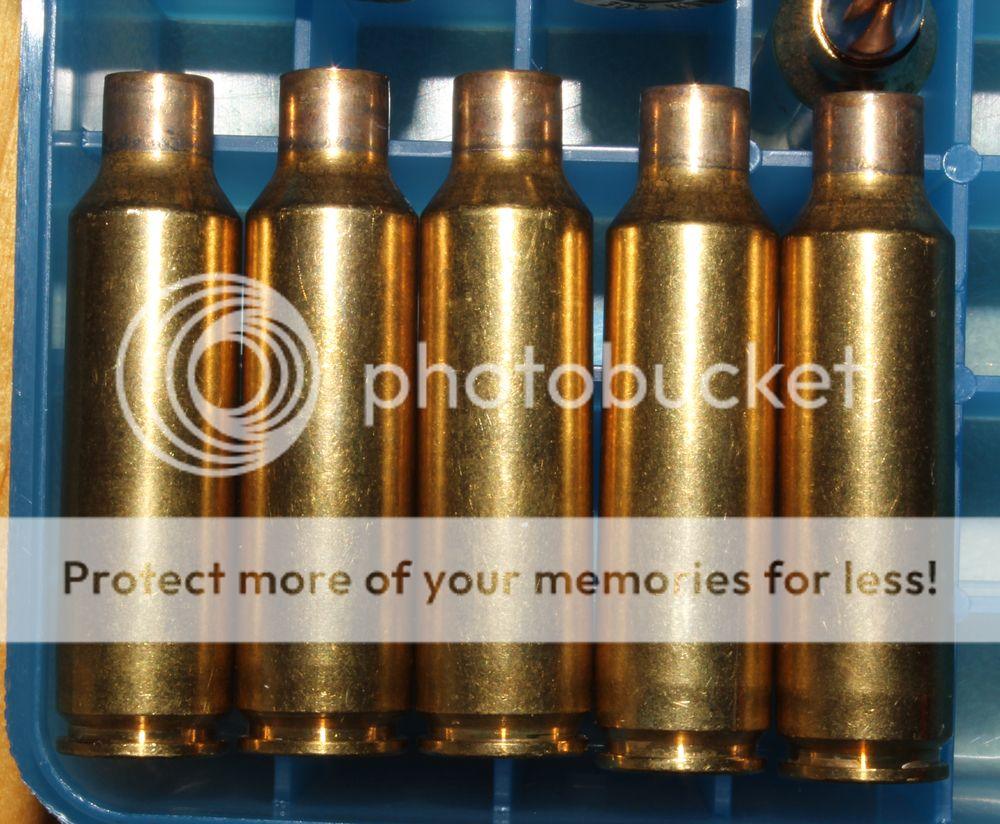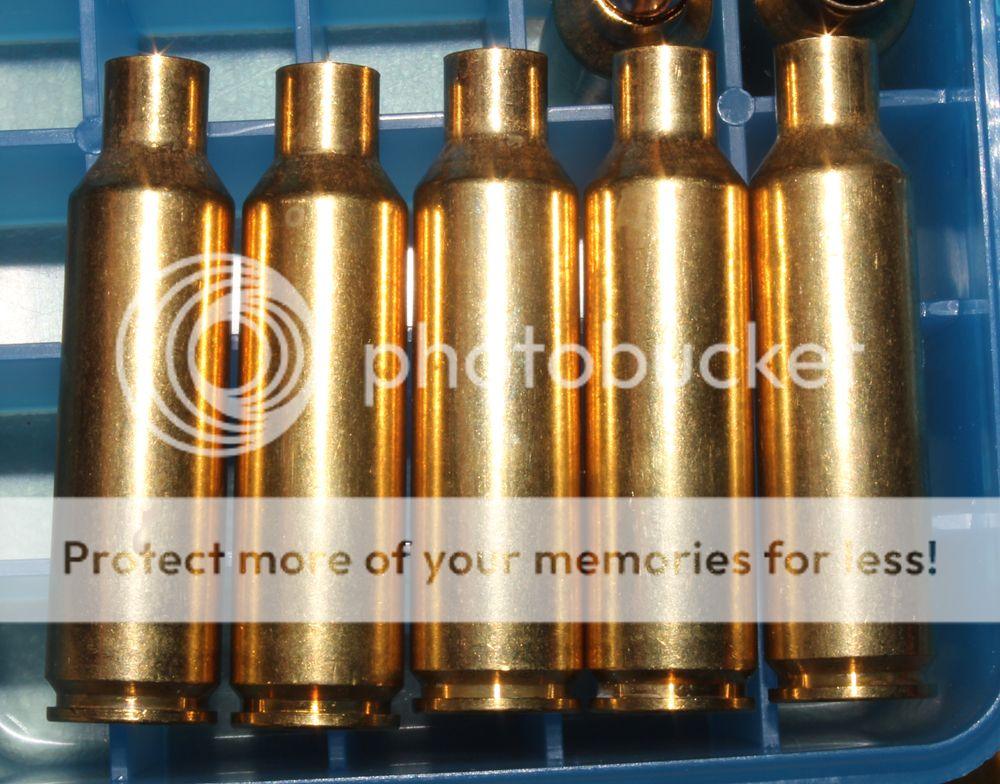Hey gang,
I've been a bit of lurker and finally registered. First post.
I got a Browning X bolt in .300 WSM recently I just shot it for the first time this weekend. I picked loads below published data limits and was surprised to see some signs of overpressure.
I loaded two batches, all with new Win brass, CCI magnum primers, Barnes 168 TTSX. Loaded to just fit in the magazine (which happened to be 0.020 off the lands).
I loaded some sighters and then some increasing powder charges to find out when I ran into pressure signs so I could know my upper limit and start developing an accurate load.
First batch was H4350. Hodgdon lists 61.0 as a start with a velocity of 2908 and a max of 64.5 and velocity of 3034 with a 168gr sierra HPBT.
I loaded up some sighters at 63.5gr H4350 and that was the only charge I ended up shooting as I started to get light ejector marks. No flattening of the primers or heavy bolt lift, but a light ejector mark on all but two of the 7 rounds fired.
My velocities: 2979, 2972, 2978, 2961, 2977, 2958, 2983.
Very happy with the consistency but I didn't expect ejector marks on the brass at that charge or velocity.
Next batch was RL17:
64.0gr sighters
3060, 3068, 3049. All with ejector marks with no other signs of overpressure.
85 degrees, 1200ft elevation.
So what do you guys think? I would appreciate any input, especially from those that reload this caliber with those powders. Of course I realize that each chamber and barrel can vary but I am curious what others are getting.
Thanks,
John
I've been a bit of lurker and finally registered. First post.
I got a Browning X bolt in .300 WSM recently I just shot it for the first time this weekend. I picked loads below published data limits and was surprised to see some signs of overpressure.
I loaded two batches, all with new Win brass, CCI magnum primers, Barnes 168 TTSX. Loaded to just fit in the magazine (which happened to be 0.020 off the lands).
I loaded some sighters and then some increasing powder charges to find out when I ran into pressure signs so I could know my upper limit and start developing an accurate load.
First batch was H4350. Hodgdon lists 61.0 as a start with a velocity of 2908 and a max of 64.5 and velocity of 3034 with a 168gr sierra HPBT.
I loaded up some sighters at 63.5gr H4350 and that was the only charge I ended up shooting as I started to get light ejector marks. No flattening of the primers or heavy bolt lift, but a light ejector mark on all but two of the 7 rounds fired.
My velocities: 2979, 2972, 2978, 2961, 2977, 2958, 2983.
Very happy with the consistency but I didn't expect ejector marks on the brass at that charge or velocity.
Next batch was RL17:
64.0gr sighters
3060, 3068, 3049. All with ejector marks with no other signs of overpressure.
85 degrees, 1200ft elevation.
So what do you guys think? I would appreciate any input, especially from those that reload this caliber with those powders. Of course I realize that each chamber and barrel can vary but I am curious what others are getting.
Thanks,
John

